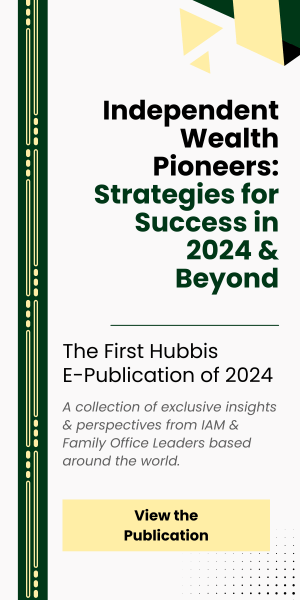What Factors Should HNW Investors consider when purchasing Life Insurance and what Questions should they ask?

Aug 23, 2023
The correct utilisation of life insurance can provide significant benefits in assisting HNW clients to achieve their financial planning objectives.
Nevertheless, the conventional wisdom is that life insurance is sold not bought. The result of this is that life insurance is often mis-sold, in that the policy selected is not the right policy to meet the client’s objectives or the client simply does not understand the likely outcome.
The key to the successful application of life insurance into a HNW family’s product scope is for the family to understand why they need life insurance, the identification of the right type of policy to target this need, and the selection of the right insurance company to lay off this risk and obtain exposure to solid underlying investment fundamentals in the case of cash value policies.
This article is designed to equip the HNW family and their independent advisors with the key factors necessary to empower themselves to evaluate the right course of action to take and the correct product selection to arrive at a successful outcome.
There are a number of factors which we will consider, following which we will assess the principal questions that need to be asked.
The Fact Find
To understand the need for insurance, one must assess what risks need ensuring – life insurance like any insurance is about risk management.
To do this the advisor should have a detailed understanding of the client’s financial position, including income flow and source, assets and liabilities. This will then enable both the client and the advisor to understand where the key risks lie and what remedial action and risk management is optimal. In order to achieve this a detailed Fact Find will enable a Needs Analysis to identify appropriate solutions.
For the younger individual or family, they are generally in a position where they are income rich but capital poor. During this phase of life, this segment is in the process of building wealth, purchasing assets (such as their home) and often accruing debt in the process. The risk therefore is that the cash flow being generated through employment could suddenly end as a result of death or incapacity. The answer therefore is likely to be a low-cost form of insurance with little if any cash value and designed simply to pay off the liability (mortgage/loan) if something should happen during the period in which the debt is being paid down.
For the older individual or family, the needs are likely to be very different, capital will have been accumulated, but liabilities may take the form of taxation, or the need for liquidity planning around illiquid assets or estate equalisation where the family is trying to balance the inheritance to be received by different family members. The need therefore may be long term need, require the creation of capital (there is no free lunch) and may be determined on a life assured whose life expectancy is unknown.
The first action point therefore is to conduct a Fact Find and Needs Analysis where the liability can be clearly identified and matched with a suitable product. This is how the conventional wisdom can be interrupted and the client can empower themselves to be a buyer of a product solution, as opposed to being sold what may be the wrong solution. A good banker, wealth manager or other financial advisor will be expected to guide the client through this process.
Sourcing Advice
Having evaluated a need for life insurance, more detailed advice will be needed. To obtain this advice it is vital for the client to understand the type of regulated advice that can be obtained, whilst assessing the nuances and conflicts of interest in the process.
In most clients’ experience, the following are the principal regulated channels they will come across:
- The Introducer – this party is most typically the private banker or wealth manager of the client. Typically, they are not authorised or regulated to provide insurance solutions, so they will enter into an introductory agreement with a third party, typically an Insurance Broker, or the tied agent of an insurance company, and introduce the client to this regulated party who will advise on and complete the sale of the insurance product.
- The Insurance Broker – this party will be regulated and authorised to act on behalf of multiple insurers to sell their product. The advantage of this approach is that the Insurance Broker can obtain a competitively priced product from a basket of insurers. There can be significant variations in product pricing and insurance company strength, so the ability to select from a basket of insurers is attractive to the client, particularly where cash value policies are purchased.
- The Tied Agent – this party can take several forms, but the fundamental characteristic is that the Tied Agent is tied to just one insurance company and will therefore only be able to recommend the insurance policies of this company, even if they are not the most competitively priced. The Tied Agent may work directly with an insurance company, or in the case of some banks, and for their retail distribution network, the bank may only recommend the policies of one insurance company.
The HNW Client must know the type of regulated advisor that they are dealing with. Clearly, logic would stipulate that an Insurance Broker with a broader selection of insurance carriers and products is likely to be the right place to go.
Having assessed this, the Client must then fully understand the remuneration dynamics of life insurance. As with the conventional wisdom that insurance is sold not bought, to empower oneself as a purchaser, one needs to understand the remuneration flows and the potential conflict of interests that results to ensure that one is purchasing intelligently.
Follow the Money - Transparency
Commissions paid by insurance companies can be substantial as a percentage of premiums paid, which can in turn be nominally substantial if the premium amounts are large. For example, a $1 million single premium to a Universal Life policy may pay out a commission to the sales channel of up to 12% or more – that would be $120,000. This factor can be exacerbated when premium financing is involved. For example, let’s say (in very simple terms) that a client puts down cash of $200,000, and borrows $800,000, then the commission as a percentage of “real money” put down by the client, becomes 60% (120,000/200,000).
Where such large commission payments can be payable, it is important that the client understands their real cost, and furthermore understands why there is a possibility that they are being sold something they do not really need (hence the Fact Find and Needs Analysis).
Key factors to consider will be as follows:
- The longer the duration the higher the commission – a whole of life policy will pay out a larger commission than a 1-year term insurance policy. So, if according to the Needs Analysis there is a short-term liability (let’s say a key man policy to cover a 5-year bridging finance requirement), and the client is sold a long-term product as a solution – then there may be a product mismatch driven by commissions rather than the right advice/solution.
- An Introducer, such as a private bank or wealth manager is likely to have an introductory arrangement with the insurance broker or tied agent, whereby there is a commission share. The client should be aware of this as it puts the private banker or wealth manager into a position of a conflict of interest, particularly where substantial commissions are concerned. Furthermore, with a private banker, there is a motivation to get a client to undertake premium financing as this has the combined effect of increasing the premium size (and subsequently the commission) as well as generating additional revenue on the spread on the loan (and the maintenance of assets with the bank which might otherwise have been utilised to pay the premium).
- An Insurance Broker or Tied Agent will receive commissions from the insurance companies. As we have identified it is important for the client to understand this relationship and the potential conflict of interests. Furthermore, if one is dealing with a Tied Agent, then one knows that they can only sell the product of one insurance company. The issue with an Insurance Broker is that in some instances the broker may be paid additional commission overriders based on volume of business. There may therefore be an incentive for the broker to direct the flow of business to only select insurers whilst other better ones, may be ignored.
When one follows the money, in this case commissions, one can better evaluate risks associated with the mis-selling of product alongside the associated conflict of interests. Clearly, the insurance intermediary should be compensated for their time and expertise in the process, but a basic understanding of the compensation flows can allow the client to assess potential conflicts and ask specific questions on the suitability of the product.
Product Choice
A basic understanding of the product choice enables clients to assess the suitability of the product recommended and the appropriate questions to ask.
The are 4 critical differentiators in life insurance products to be aware of:
- Risk Only – These policies are typically referred to as Term Insurance. That is there is a specific liability arising on the life of a person for a specified period of time, this period typically being a shorter period of time. The policy only covers the risk during that term and there is no cash value build up involved. The advantage of these policies is that because one is only paying for life cover (and no cash value build up), the premium cost is significantly less. The disadvantage is that at the end of the term there is nothing left, but where the objective is a short-term liability cover at low cost, then this is an ideal solution.
- Cash Value – These policies can incorporate Whole of Life, Universal Life or Variable Life Insurance. They are generally designed to build up a cash value over the long term to meet a future liability (normally the death of the life assured). The structure of the policy is to allow a cash value build up, combined with a term insurance which declines as the cash value is built up, so that the selected total sum assured is either paid out if the life assured dies prematurely (due to the built in decreasing term cover), or if living a long and happy life the cash value reaches the selected insurance total death benefit. Cash value can also incorporate a term in the form of an endowment policy, whereby the cash value is built up over (say) 25 years (for example to pay off a mortgage), or indeed a Universal Life policy is in effect a long-term endowment policy (typically written to age 100), and as such, the client will want to have a clear understanding of the differences, the pros and the cons and the risks of the policy failing to provide the anticipated death benefit (in the case of Universal Life).
- Liability Insured – Most peoples’ perception of life insurance is precisely that, a death benefit, payable on death. However, some policies can incorporate Critical Illness and Incapacity benefits, such that for example a diagnosis of cancer may result in a lump sum payment. The more risks that are insured, clearly the more expensive the policy will be, nevertheless these policies can be attractive for younger people during their capital accumulation phase.
- Minimum Death Benefit Cash Value – These policies are typically variations of a Whole of Life policy, but will have the minimum necessary death benefit to qualify the policy as a life insurance policy in order to obtain the tax benefits of life insurance. Some countries allow almost no death benefit other than the cash value of the policy, so it may be determined that these types of life insurance policies can be utilised for tax planning purposes.
Insurance companies may provide other products such as pension and annuity solutions, as well as life insurance.
In the product selection process, during which the advisor should assess the Fact Find and Needs Analysis to match the right product with the identified liability, the client should have a clear understanding of the product selected and the reasons why.
If the product selected is a cash value product, then there are two sets of key information that the client needs to understand in the form of how that cash value is built up and the security of the insurance company (the strength of its balance sheet to support the cash value build up).
Insurance Company Strength
The financial strength of the insurance company is exceptionally important, and the occurrence of insurance company collapse is not uncommon. In Canada, Confederation Life was forced into liquidation in 1994 and in the UK, Equitable Life, which was founded in 1762, was forced to close to new business in 2000 due to unhedged investments derived through guaranteed annuity rates, and the assets were sold off with policyholders facing significant losses.
As a potential policyholder, a sound understanding of the insurance company’s financial strength should be obtained from the insurance intermediary. In simple terms from a risk point of view, the following are key factors:
- A Cash Value policy, dependent on the General Account of the insurer, is exposed to the balance sheet risk of the insurance company. The policyholders’ assets are therefore not segregated from the risks of the insurer, like an account holder with a bank in respect of their deposits with the bank.
- Unit Linked Life insurance involves the cash value build up typically in investment funds accessible via the insurer. In most case these investments are segregated from the General Account balance sheet exposure of the insurance company.
Clients should have a good understand of the financial strength of the insurance company chosen and understand the balance sheet risk associated with the investment method chosen in relation to cash value policies.
Method of Cash Value Build Up
For cash value policies there are a number of methods of building up the value over time. The following is a short summary:
- General Account – Under these policies the cash is aggregated to the insurance companies balance sheet (and thus the balance sheet risk), and the actuaries will typically calculate a “crediting rate” to the policy cash value. The General Account is typically substantially invested in sovereign and corporate bonds and as such the crediting rates will reflect to a certain extent prevailing interest rates. An understanding of how these rates move is important (i.e. the lag between moves in interest rates generally, and the crediting rates that insurance companies apply to the policy account.
- Indexed Policy – Under these policies, the performance of the cash value will be linked to the performance of a selected equity index such as the S&P500. In order to manage risk, a floor will be introduced to prevent the cash value falling through this level (for example in an equity market crash). In order to receive the protection of the floor, a cap on the upside will be introduced to in effect pay for the floor. The advantage of these policies over General Account crediting rates is that the mechanism can create the opportunity for high returns than the General Account approach, although this is not guaranteed.
- Variable Insurance – Under these polices the policy owner might select from a range of investment fund options that the insurance company has on its books. This can provide further long-term upside potential to the cash value, but without the floor that the Indexed policy has, there is a greater risk that if there is a prolonger market downturn, and costs of insurance continue to be deducted from a declining value, thus increasing the rate of decline in the value to an extent that it cannot recover.
- Private Placement Variable Insurance – Under these policies, where significant premiums are involved, the insurance company may accept tailored investment portfolio and indeed assets. So, for example, a client who wants an absolute return strategy that he thinks will be less volatile than Indexed or Variable Insurance, and perform better than General Account, may want to place a tailored hedge fund portfolio, chosen by the client’s banker or wealth manager, as the investment element of the cash value policy.
For the client, the key when selecting the cash value investment method is to understand which method is being recommended and why, and if the client has a strong view as to their preferred option then the insurance advisor will need to take this into consideration when selecting the insurer.
Summary
A basic understanding of the factors listed above then enables the client, or their advisor, to start asking detailed and pertinent questions of the wealth manager and insurance advisor. The key is to arrive at both the right conclusion as to the best insurance solution to meet the client’s needs, whilst ensuring that the “sale” is not a one-off event and that proper follow on servicing is available.
A key list of resulting questions might therefore be as follows:
- Shall we do a detailed Fact Find to properly undertake a Needs Analysis? How do we arrive at the right decision on the correct policy selection?
- How do you operate and how are you regulated? Are you a tied agent, or are you a broker or are you an introducer to a broker or tied agent?
- If you are a tied agent, why would I deal with you rather than go to a broker – what is your edge?
- If you are a broker, which insurance companies do you work with? How many insurance companies will you show me proposals from? How do you evaluate the insurance companies to include them on your panel (pricing, strength, cash value build-up method). Is your remuneration identical from each insurance company or do you have special arrangements in place with certain companies?
- If you are an introducer, which broker do you work with? Do you work with more than one broker? Who is my contractual relationship with (i.e. who do I sue if I receive bad advice?). What are your remuneration arrangements with the broker? If the premium size is substantial, will you negotiate a re-imbursement of some of the commissions or fee basis for the insurance recommendation?
- On selection of the recommended policy type – why have you recommended this type of policy. What alternatives are there – what is the advantage of this policy type over other policy types – can you demonstrate how this policy selection specifically achieves my Needs identified in the Fact Find. What are the Fixed and Variable Costs involved in the policy and what are the associated risks?
- Cash Value Build Up Method – please explain to me the different methods of cash value accumulation available to me (General Account, Indexed, Variable) – in your professional opinion what would be the best fit for me and tell me why you have come to this conclusion?
- If I proceed with this policy with you as the insurance intermediary, how will you provide ongoing servicing to me on the policy, how will I know the effectiveness (or not) of the cash value build up, and how will the long-term servicing on the policy be paid for?
Understanding the above and undertaking critical questioning of the insurance advisor can ensure a successful outcome in being an empowered buyer of life insurance, to the benefit of all parties concerned.

CEO, Rapier Consulting. And Engagement & Consultant Partner, at Hubbis







